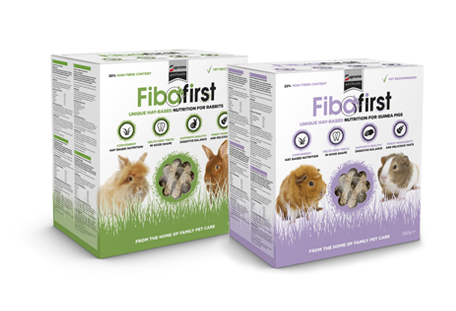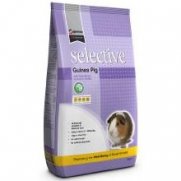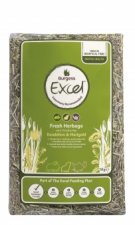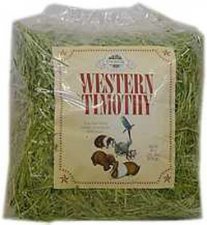Correct Feeding

Hay is the main course, everything else is a side dish!
Hay
You should ideally feed Timothy Hay, as its long fibres help to keep the teeth in check. Timothy hay is low in calories, high in fibre and has low dust content.
Your Guinea pig IS what he eats!
There are generally two types of commercially available food that you can feed your guinea pig: pelleted food and mixed (or muesli-style) food.
Fibafirst is a new diet developed to address many of the problems created by the current commercial guinea pig foods. Please click here to learn more about this great new food.

Other diets we recommend are pelleted guinea pig food, the uniform pellets of crushed and compressed ingredients will stop selective feeding.

Supreme Science Selective Guinea Pig
Muesli-style foods can be a problem because guinea pigs may become fussy eaters; they can pick out the unhealthy bits in muesli-style foods and leave the rest (selective feeding). This can lead to an imbalanced diet which is lacking in calcium, phosphorus and vitamin D, as well as a diet which is low in fibre, leading to very serious consequences. Too little vitamin C leads to serious ill health and scurvy and an unbalanced diet leads to poor bone structure of the spine and skull.
Fresh Greens
Guinea pigs need fresh greens daily. They also relish fresh herbs which can be easily grown on your window-sill for a year round treat. Offer hand picked grass and dandelion leaves collected from dog free areas.
Fruit can be given as a treat, such as a bit of apple every couple of days.
Not every fruit or vegetable is good for your guinea pig.
Below is a brief guide of what you can, and can't, feed your guinea pig:
Good - apples, asparagus, basil, broccoli, Brussel sprouts, cabbage, cantaloupe melon, carrots and carrot tops, cauliflower leaves and stalks, celery, chicory, Chinese parsley, coriander, cucumber, dill, garden cress, grapefruit, gooseberries, honeydew melon, kale, kiwi fruit, mangoes, oranges, parsley, parsnips, peas, red cabbage, red chard, romaine lettuce, Savoy cabbage, spinach, strawberries, tangerines, tomatoes, turnips and water cress.
Bad - iceberg lettuce, potato and potato tops, rhubarb and rhubarb leaves and tomato leaves.
Avoid - grass mowings, kitchen waste and commercial guinea pig treats which are often too rich and sweet.
Remember to remove any uneaten fresh food before it turns bad.
Poisonous Plants
There are several plants that are poisonous to guinea pigs. Never feed them to your pets and make sure there's no access to them in the house or garden. This isn't an exhaustive list, but some plants and flowers that are poisonous to guinea pigs are: bindweed, bryony, buttercup, bluebell, crocus, daffodil, dock, dog mercury, foxglove, hyacinth, laburnum, poppy, ragwort, sorrel, toadflax, tulip and yew.
While some may not be fatal they can cause stomach pain and digestive problems.
Fresh water daily
Change water daily. Ideally use a gravity water bottle which delivers a small amount of water when the guinea pig licks at the spout. Water dishes can become easily contaminated, but if you do choose to use one select a heavy dish which can't be easily knocked over.
Disinfect the water bottle weekly in a sterilising solution suitable for babies. Follow the instructions carefully and rinse thoroughly before use.
A water bottle cover is advised to help limit algae growth in summer and help prevent the water freezing in the winter.



